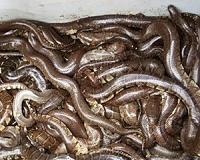| . |  |
. |
for Astrobiology Magazine Moffett Field CA (SPX) Sep 07, 2010 Viruses are a curious lot. The standard drawing of the tree of life, the one you find on the inside back cover of biology textbooks, is divided into three branches: Archaea, Bacteria and Eukarya. Viruses don't make it onto the page. That makes sense, some scientists argue, because they're not alive. They can't reproduce on their own; they require the cozy environment of living cells for their survival. Others disagree. Not only are viruses alive, they say, but genetic evidence indicates that they may have been the first forms of life on Earth, predating cellular life. But really, says Ken Stedman, associate professor of biology at Portland State University, "Nobody knows how old viruses are." Stedman and his colleagues are working to change that. Unlike bacteria, for which there is an undisputed rock record going back as far as 3.5 billion years, there is no known fossil record for viruses. "As far as we know," Stedman says, "no-one has looked." It's possible, he concedes, that there have been efforts, unsuccessful efforts that no one knows about, to uncover fossil viruses. But "If you don't find something, you're not likely to report it." In an attempt to learn how long viruses have been around, Stedman's lab, in work led by his doctoral student, Jim Laidler, is trying to figure out what kind of biosignatures viruses might leave behind. This lab-first approach, Stedman said, is necessary because "we don't know what we're looking for yet." Much of the work of Stedman's group is done in hot springs. Silica hot springs, in particular, are known to provide a good preservation environment for bacteria. Silica precipitates out of the hot water as the water cools, and bacteria that are present can become entombed in the silica-rich rock that forms. In the process, the shapes and the chemical signatures of these bacteria can be preserved. Stedman's group wanted to see if they could induce a similar process using viruses instead of bacteria. They first virus they chose was Bacteriophage T4, "sort of the prototypical virus," which has a well-known shape. It "looks like the lunar lander," Stedman said. Mixing the virus with silica-rich hot-spring water yielded a positive result, briefly. For a few days, under the microscope, virus shapes could be seen embedded within the silica. But "after about a week it starts to look like a blob," Stedman said. Not too hopeful a result, if the ultimate goal is to look for visual evidence of viruses in rocks billions of years old. But Stedman and his colleagues are not deterred. They have a number of additional avenues of investigation planned. One is to try the experiment with viruses that come from hot springs, where Stedman does much of his research. "It may be that these are much more resistant" to disintegration, he said, that they "form a structure" that is "better conserved" over time. Another approach researchers plan to pursue is looking for chemical signatures. Although the physical shape of the virus doesn't stick around for long, it's possible that a detectable chemical signal may remain for longer. Alternatively, because some viruses have lipid coatings, similar to the lipids found in the walls of living cells, lipids may provide a detectable chemical signature. Virus lipids can differ chemically from the lipids found in their microbial hosts, and that distinction may prove useful in the chemical detection of fossil viruses. "We don't know if there is actually a different signature between the host and the virus," Stedman said. So far, research has focused on the silicification of individual virus particles. Some viruses, however, particularly those that live inside algae, tend to cluster together in large numbers. They "almost form crystalline arrays," Stedman said. These larger masses may fossilize in ways that are easier to detect. Laidler plans to explore all these various approaches in the lab, and also to study hot-spring sites in search of effects that can be clearly identified on a short time scale. If those efforts pan out and clear chemical biosignatures of virus signatures can be identified, Stedman says, "those then could become something that we can now start to look at back through the rock record." Results of Laidler's initial work on virus silicification was published in the July/August 2010 issue of the journal Astrobiology. He and Stedman hope that future research into fossil viruses will help to fill in gaps in biologists' knowledge about the role viruses played in the development of life on Earth. It may even answer the question: which came first, the virus or the cell?
Share This Article With Planet Earth
Related Links Portland State University Darwin Today At TerraDaily.com
 Malaysian 'Lizard King' jailed for smuggling snakes
Malaysian 'Lizard King' jailed for smuggling snakesKuala Lumpur (AFP) Sept 6, 2010 A notorious Malaysian wildlife trafficker nicknamed the "Lizard King" was sentenced Monday to six months in jail for smuggling snakes, a penalty activists said was far too lenient and a "tragedy". Anson Wong, 52, described as one of the world's most-wanted traffickers, pleaded guilty last week to attempting to smuggle 95 endangered boa constrictors to neighbouring Indonesia. He was sente ... read more |
|
| The content herein, unless otherwise known to be public domain, are Copyright 1995-2010 - SpaceDaily. AFP and UPI Wire Stories are copyright Agence France-Presse and United Press International. ESA Portal Reports are copyright European Space Agency. All NASA sourced material is public domain. Additional copyrights may apply in whole or part to other bona fide parties. Advertising does not imply endorsement,agreement or approval of any opinions, statements or information provided by SpaceDaily on any Web page published or hosted by SpaceDaily. Privacy Statement |